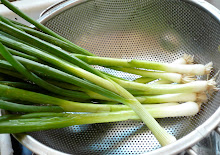Lots of people who like to cook find inspiration in dishes their parents make, or their grandparents. But what about their kids?

Maya is a baker. She is a dessert queen. She went into the kitchen by herself when she was about 11, picked up a spatula, and never looked back. Blondies, brownies, lemon squares, chocolate chip cookies—the girl has not yet met a stick of butter she could not bend to her sweet-toothed will. “Baking is very satisfying,” she says. “It’s fun to make something and have it come out really delicious and have people like it.”
Now, three years later, Maya dabbles in non-dessert foods—oven carrot fries, for example, and homemade pasta—but those dabblings, while quite successful, do not give her quite the same satisfaction as the sweets. Can’t say that I blame her; snagging a carrot stick from a roasting pan just isn’t the same as sticking your finger in a bowl of cookie batter.
But perhaps it is the reliability of baking that appeals to her, the formulas, the chemistry between the ingredients that all but promises success. “I like to follow a recipe and know it will come out right,” Maya says. So far, so good. Maya started making chocolate birthday cakes a couple years ago, from a recipe she found on a plain old tin of Hershey’s unsweetened cocoa. Unbelievably good. Her next holy grails are a coconut cake and a “death-by-chocolate” torte. Both “seem like real projects,” she says happily. “Sometimes I’m in the mood for something easy, but sometimes I’m in the mood for a challenge.”
It is springtime, and I suppose we should be talking about rhubarb, or fiddleheads, or ramps, etc., etc. All those ingredients are fresh and wonderful (except for fiddleheads—eh), but Maya would compost them in a flash if she had butter, chocolate, and peppermint extract at the ready.
Yes, peppermint extract—or creme de menthe—destined for a batch of brownies that may change the way you think about brownies. These are rich and fudgy, but also fresh and cool, with the tiniest sharp edge from the peppermint. Brownies for springtime.
Mint Brownies
(adapted from How to Cook Everything by Mark Bittman)
1 stick butter
2 oz. unsweetened chocolate
1 cup sugar
2 eggs
1/2 cup flour
1 large pinch salt
1/2 tsp. vanilla
1/2 tsp. peppermint extract or 1/4 cup creme de menthe (if using the latter, add an extra tablespoon of flour)
1/2 to 3/4 cup white chocolate chips (the mint mitigates the heavy sweetness, promise!)
Preheat oven to 350 degrees. Grease an 8-inch square pan, or line it with aluminum foil and grease the foil (easier cleanup and extraction of brownies!).
Melt chocolate and butter together over low heat. Transfer to a bowl, and mix in the sugar and the eggs. Stir in the flour, then the extracts, then the white chocolate chips. Pour the batter into the prepared pan and bake for 20 to 25 minutes. Cool, then pop the brownies in the fridge and chill until cold before cutting into squares.




















